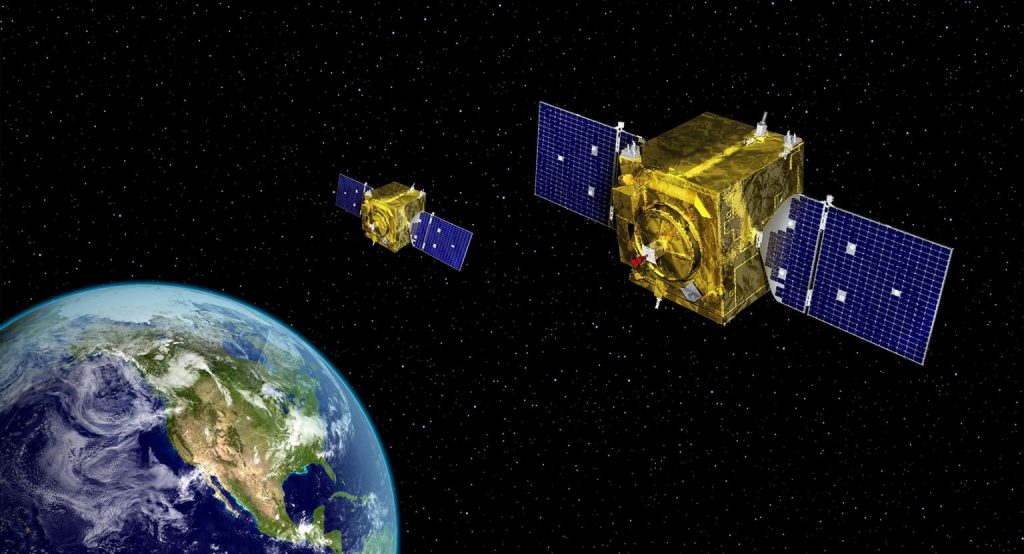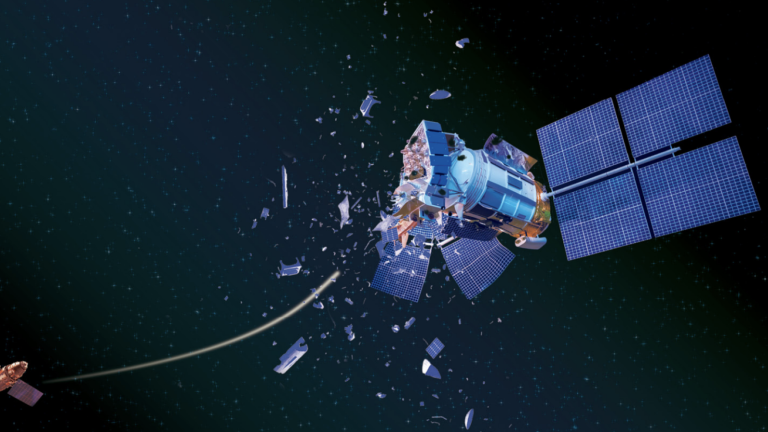The First Space War Explained: Scenarios for Future Interstellar Battles
Key Takeaway
The war in Ukraine has become the first space war, with nations using and disrupting satellites for military purposes. This raises concerns about a potential future escalation that could involve attacks on entire satellite constellations.
Summary
- The ongoing war between Ukraine and Russia heavily relies on satellites for tasks like collecting imagery, identifying targets, and facilitating communication.
- This conflict is considered the first space war, with nations using satellites for military advantage.
- David Ignatius, a journalist and novelist, explores the potential dangers of space warfare in his new novel “Phantom Orbit”.
- The real-world events in Ukraine inspired Ignatius to include plot points about satellite internet disruptions and the use of commercial satellite imagery.
- Russia has escalated its space-based attacks by interfering with Starlink, GPS, and camouflaging military assets.
- Experts warn that if the conflict intensifies, Russia might resort to destroying entire satellite constellations, creating a dangerous debris field.
- The US is aware of the vulnerability of its space systems and is working on making satellite networks more resilient through initiatives like “Tactically Responsive Space.

The First Space War: Is Our GPS Vulnerable?
The war in Ukraine has taken a dramatic turn – it’s no longer confined to land, sea, and air. This conflict marks the dawn of a new era of warfare – space war. Satellites, once thought of as neutral observers, are now critical tools on the battlefield. From providing vital communication links to delivering high-resolution imagery, both Ukraine and Russia are heavily reliant on space-based assets.
This newfound dependence on satellites raises a troubling question: how vulnerable are our space systems to attack?
A Battlefield Above the Clouds
The war in Ukraine has become a test case for space warfare. Satellites are being used for:
- Intelligence gathering: High-resolution imagery from commercial and military satellites provides crucial intel on troop movements and battlefield developments.
- Communication: Satellites play a vital role in military communication, ensuring commanders can stay connected and coordinate strategies.
- Navigation: GPS and other navigation systems are essential for military operations, from guiding missiles to troop deployment.
Disrupting these capabilities can significantly hinder an opponent’s warfighting efforts. This is precisely why Russia has targeted Ukrainian satellite communications and attempted to jam GPS signals.
Fiction Becoming Reality
David Ignatius, a renowned journalist and author, explores the potential dangers of space warfare in his latest novel, “Phantom Orbit.” The book’s plot draws inspiration from real-world events like the cyberattacks on Ukraine’s satellite internet and the growing importance of commercial satellite imagery.
Ignatius’s work serves as a chilling reminder of how quickly science fiction can become reality. The potential consequences of an escalation in space warfare are severe.
Experts warn that if the conflict intensifies, Russia might resort to more aggressive tactics, potentially including attacks designed to destroy entire satellite constellations. Such an attack would create a massive debris field in Earth’s orbit, posing a serious threat to operational satellites for decades to come.
The US and its allies are aware of this vulnerability. The US Space Force, a relatively new military branch, is actively working on ways to make satellite networks more resilient. Their “Tactically Responsive Space” program aims to develop capabilities to rapidly launch new satellites in case of an attack.
The Need for International Cooperation
The current situation underlines the urgent need for international treaties and regulations governing space warfare. Similar to arms control measures for nuclear weapons, spacefaring nations must come together to prevent an uncontrolled arms race in orbit.
The future of space exploration and its peaceful use depends on establishing clear rules of engagement for this new battlefield.
The war in Ukraine has changed the nature of warfare forever. Space is no longer a safe place; it’s now a battleground. The US and its allies are creating defensive strategies. Countries need to work together to avoid a space war. Such a war would be disastrous. It would harm not only military actions but also our ability to use space peacefully for exploration and other purposes.
Hashtags:
#SpaceWar, #UkraineRussiaWar, #Satellites, #SpaceForce, #NationalSecurity, #GPS, #DebrisField, #SpacePolicy, #MilitaryTechnology, #FutureofWar
References
- Maxar. (2023). The Game-Changing Role of Commercial Satellite Imagery and Analytics in Ukraine. Maxar
- Hurst, L. (2022). Ukraine Uses Crowdfunded Intelligence to Target Russian Forces. Politico
- Center for Emerging Technology and Security (CETAS). (2023). The Role of the Space Domain in the Russia-Ukraine War. CETAS
- Ignatius, D. (2023). David Ignatius. David Ignatius
- Artificial Intelligence Podcast. (2023). Spotify
- Pomerantsev, P. (2022). This Is Not Propaganda: Adventures in the War Against Reality. W.W. Norton & Company
- Ignatius, D. (2017). War in Space Is Becoming a Real Threat. The Washington Post
- Gruss, M. (2017). Let the U.S. Air Force Mature the Space Force. Defense One
- Martinez, M. (2022). Russia Behind Cyberattack Against Satellite Internet Modems in Ukraine – EU. Reuters
- Starlink in the Russo-Ukrainian War. (2023). Wikipedia
- Boyd, K. (2022). Satellite Wars Over Ukraine. New America
- Metz, C. (2024). How Starlink Is Helping Ukraine Fight Russia. The New York Times
- New Technology Sees Through Russian Attempt to Hide Ships from Ukraine. (2023). BBC
- Swarts, P. (2023). Is There a Path to Counter Russia’s Space Weapons?. Center for Strategic and International Studies (CSIS)
- Rumsfeld, D. (1998). Rumsfeld Commission Report. Aerospace Security
- Sheehy, T. (2017). Deterring a Looming Space Pearl Harbor Through Better Public Discourse. SpaceNews
- Siegel, R. (2023). House Intel Chair: Russia’s Space Nuclear Weapon. The Hill
- Tactically Responsive Space Mission. (2023). AFWERX Challenge
- Detsch, J. (2024). Space Force to Hold Annual Tactically Responsive Space Demos. C4ISRNET
- USSF Successfully Concludes Victus Nox Tactically Responsive Space Mission. (2024). Space Force
- Martinez, M. (2024). Space Force’s Victus Haze Demo to Focus on Rapid Threat Response. C4ISRNET
- True Anomaly: Advancing Space Technology. (2024). True Anomaly
- Boyle, A. (2024). Space Force Teams Up with Blue Origin and Stoke Space. GeekWire
- Boyle, A. (2024). Gravitics and Space Force Develop Station Architecture. GeekWire
- Gruss, M. (2023). Space Force Eyes True Anomaly’s Satellite Pursuit Capability for Ops and Training. Breaking Defense
- Boyle, A. (2024). Space Force and Starfish Space Outline Satellite Docking Mission Roadmap. GeekWire
- Erwin, S. (2023). DARPA’s SpaceLogistics Step Toward 2025 Launch of Orbital Robotic Mechanic for Satellites. Breaking Defense
- Palmer Luckey and Anduril Aim to Disrupt Armsmaking. (2024). The Economist
- Center for Strategic and International Studies (CSIS). (2024). CSIS
- Space Threat Assessment 2024. (2024). CSIS
- Aerospace Corporation Publications and Resources. (2024). Aerospace Corporation

